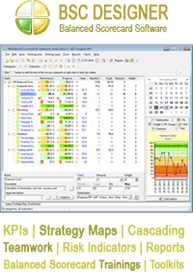How to Implement Metrics for Quality Efficiently
Quality has always been an important aspect when it comes to the success of a company or business. In fact, when quality is promised by a company to its customers, and the company itself makes do on that promise very well, then the chances of customer satisfaction retention will mostly be high. Thus, it comes as a must for companies to be in the know in developing metrics for quality. This way, the road to success would be paved better. Key performance indicators or KPIs are then needed for this endeavor.
What exactly is a KPI? This is a quantifiable measure used to determine just how progressive a certain company is in achieving its goals and objectives – both long-term and short-term. It is expected for companies to have different goals and objectives that they want to achieve. However, a common one should be the production of products and services of high quality so that customer satisfaction can then be achieved.
You actually have a number of KPIs to choose from. But be wary when choosing which ones your company should use. You can check the Internet for various examples of KPIs that you can check out. Do not just grab whatever KPI, of course, for you should go for the ones that are relevant to your company’s own goals and objectives.
It is also wrong to think that you can use the same KPIs used by another company that belongs to the same industry as you. Let us say that you own and operate a coffee shop. The KPIs that another coffee shop uses would not necessarily be the ones you should also use. This is because even if you basically operate the same type of food and beverage enterprise, the goals and objectives you have just might not match that of the other coffee shop. Thus, it is best to keep your sights set to your goals and objectives and finding KPIs that can be used to measure just that.
Another very important thing to keep in mind when implementing metrics that can effectively measure quality is that you just might have to revise your set of metrics from time to time. As tedious this may be, the process is indeed needed because there will certainly be a lot of changes that would surface a time goes by. Thus, you can never be too sure if your existing set of metrics is still measuring what it is supposed to measure in the first place. Through constant and vigilant monitoring, you can make sure that the metrics at hand still measure what they are intended to measure. After all, if the metrics you are using are already outdated, then what is the purpose of retaining them? This would just defeat the whole purpose of using metrics from the very start.
There are also several ways for you to assess and determine the quality of your products and services. One such effective way is via your customers themselves. Being the direct recipients of your products and services, they make great sources when it comes to determining customer satisfaction. The conduction of surveys, for one thing, is an easy method that you can try. And whatever their responses may be, you can definitely use them when developing metrics for quality in the long run.
—
If you are interested in metrics for quality, check this web-site to learn more about dashboard for quality control.


